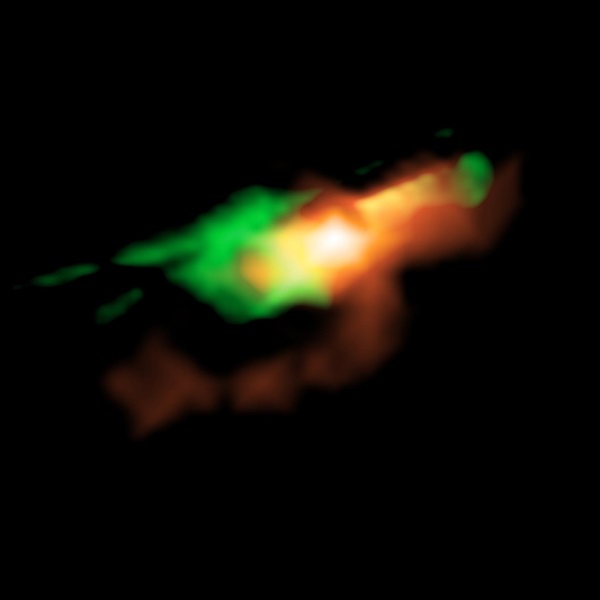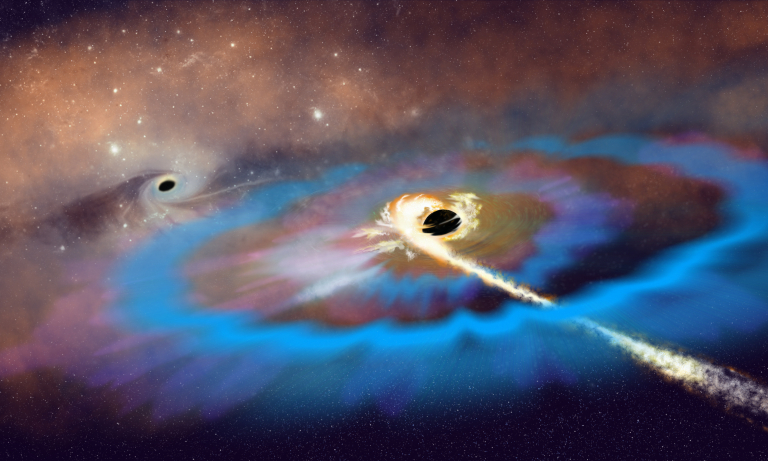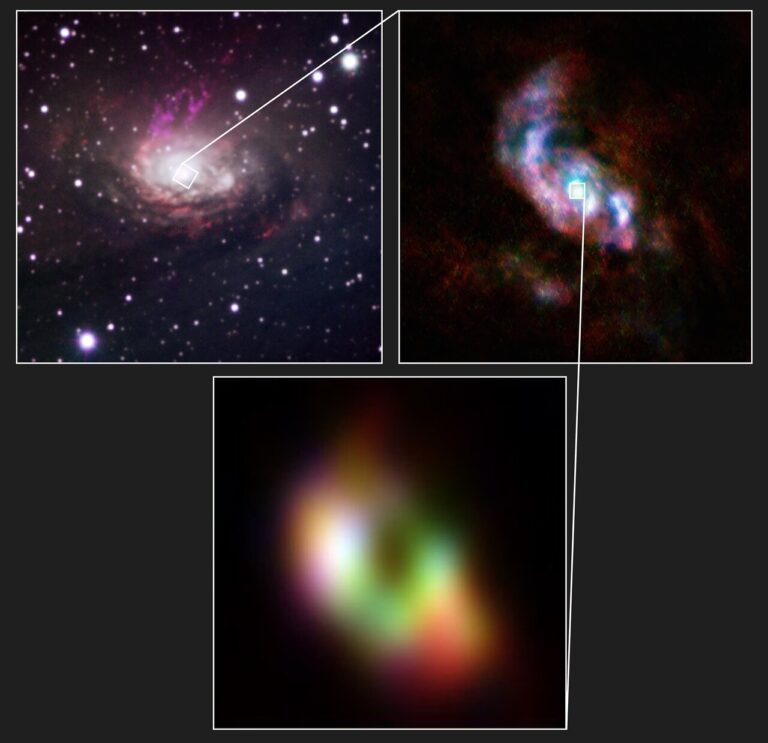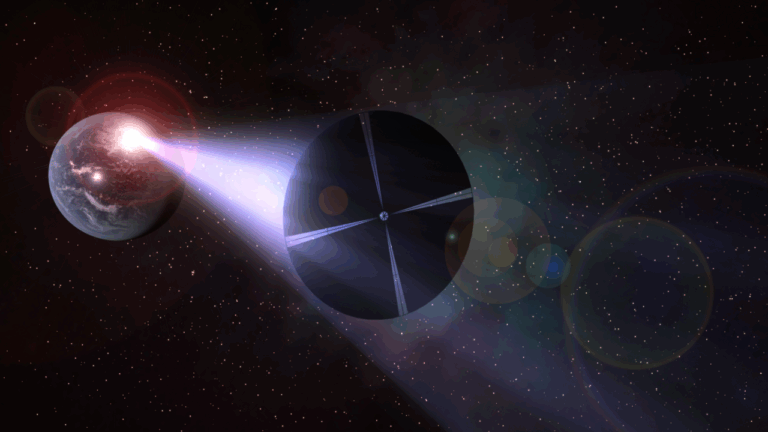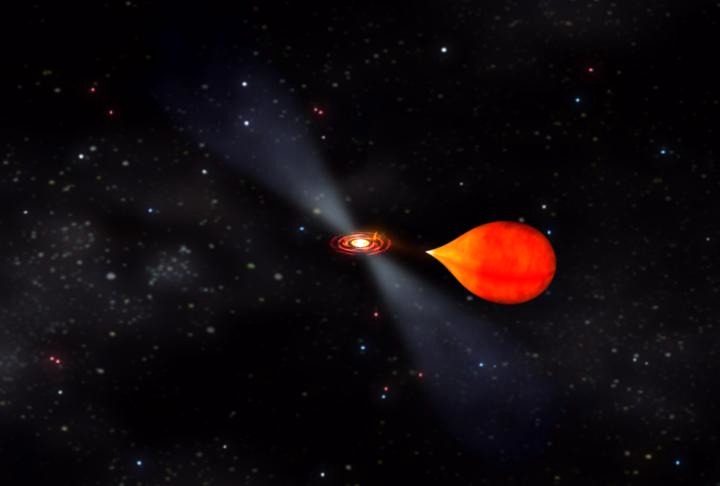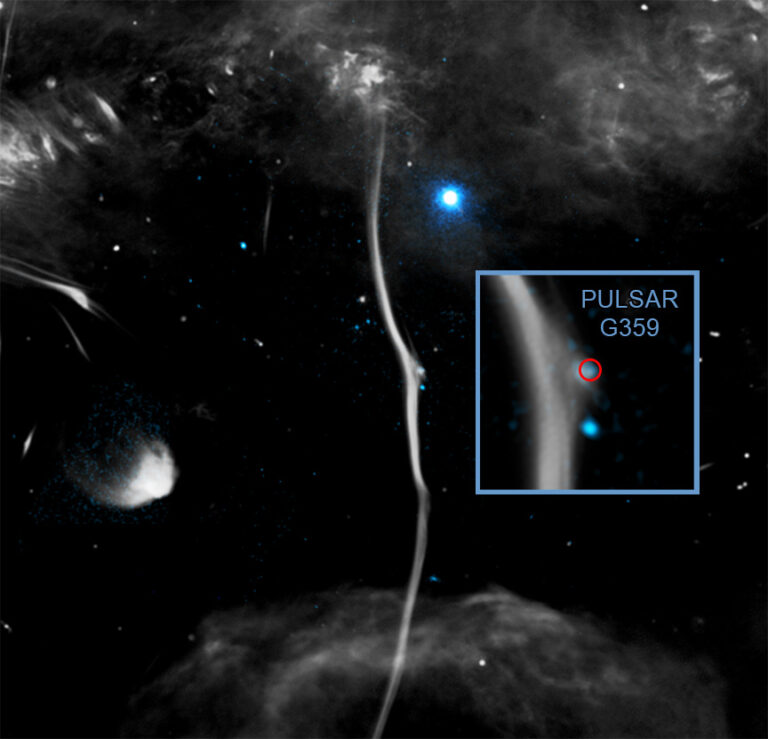Key Takeaways:
The cloudy feature, referred to as MG J0414+0534, sits in a galaxy that hosts a supermassive black hole in its core. Such giant black holes are known to blast jets of fast-moving ionized matter far out into space. And in this new study, published March 27 in the Astrophysical Journal Letters, researchers seem to see exactly that.
Based on ALMA observations bolstered by a giant cosmic lens, the team found that MG J0414+0534 highlights how powerful jets from black holes can tear through surrounding clouds of gas and dust.
But the ALMA-captured view wouldn’t have been possible without the help of a phenomenon known as gravitational lensing. This cosmic coincidence that happens when a massive foreground objects lines up just so with Earth, perfectly bending and focusing the light (much like an optical lens would) from another distant background object. The result of such a gravitational lens is that the distant background object gets significantly magnified.

Want to learn more about the mysterious beasts known as black holes? Check out our free downloadable eBook: Exotic objects: Black holes pulsars, and more.
For the study, the researchers used ALMA’s already extraordinary vision and gravitational lensing to gather incredibly detailed observations of the distant galaxy. This allowed the team to measure the violent motions of the galaxy’s gas clouds. Based on their analysis, they say some of the clouds are moving with speeds upward of 1.3 million miles per hour (2.1 million km/h). That’s obviously fast, but more importantly, such a snapshot reveals how the ancient galaxy was behaving in the early universe.
“We are perhaps witnessing the very early phase of jet evolution in the galaxy,” said Satoki Matsushita, a research fellow at Academia Sinica Institute of Astronomy and Astrophysics, in a press release.
Studying how these jets work can help astronomers piece together how galaxies in the ancient universe evolved over time. And because supermassive black holes stir up the centers of galaxies, they likely also play a major role in star formation. In nearby galaxies, powerful jets can entirely blow away gas clouds, robbing the environment of the material to form stars. But whether or not this is also true for early galaxies remains unsolved.
Fortunately, studies like this will slowly help us piece together exactly what role black hole jets play in the broader evolution of galaxies.

